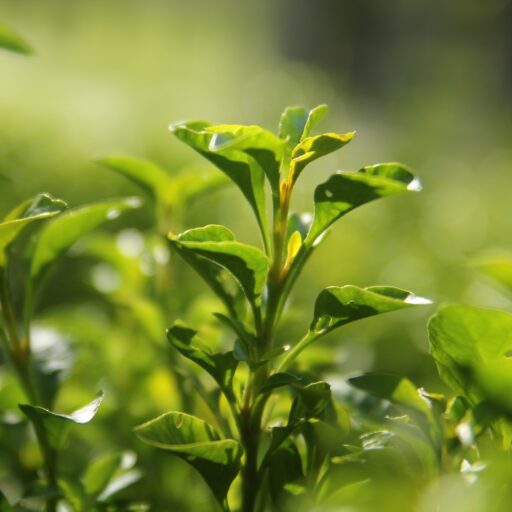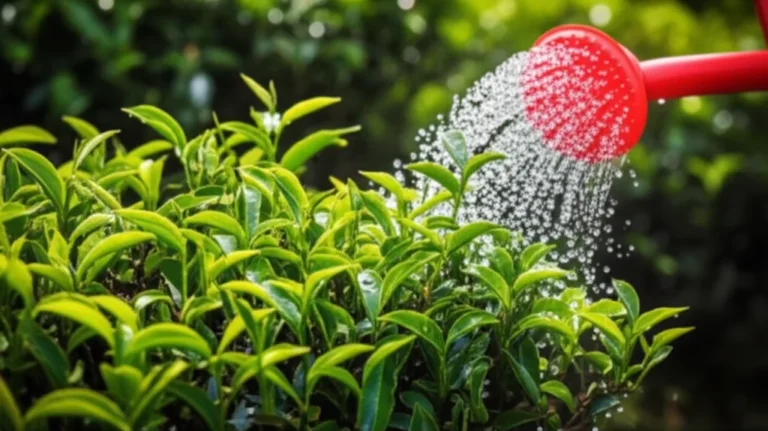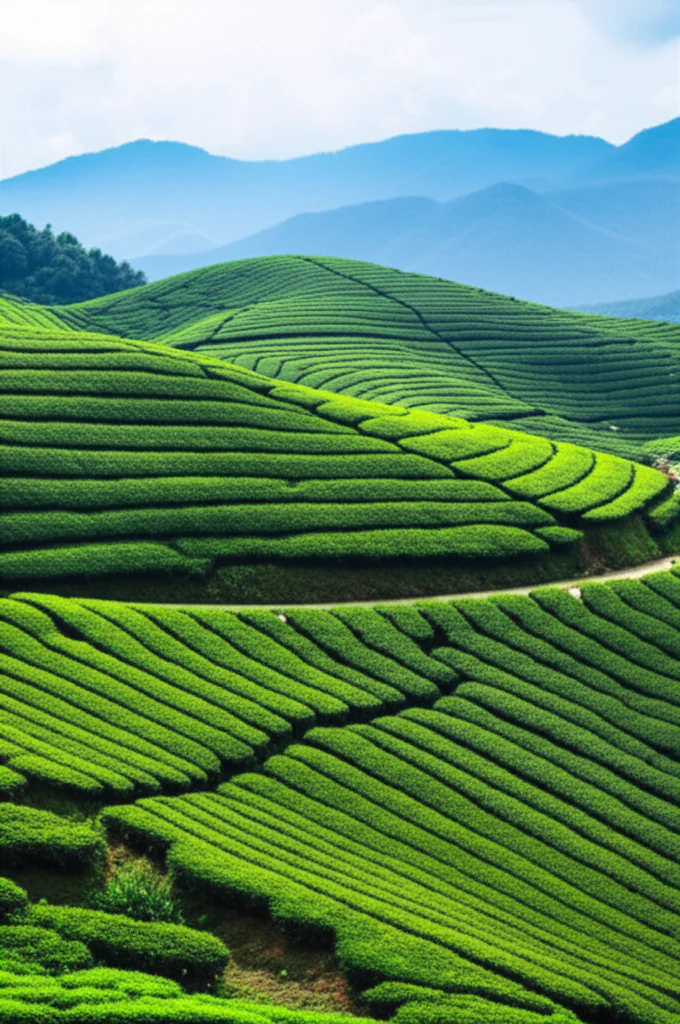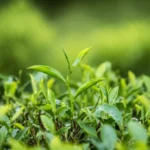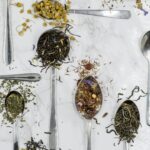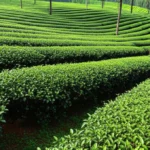Support our educational content for free when you purchase through links on our site. Learn more
🌿 12 Microclimate Effects on Tea Growth You Can’t Ignore (2025)
Have you ever wondered why two cups of tea from the same plant species can taste worlds apart? The secret often lies not just in the leaves, but in the microclimate where those leaves grew. At Growing Teas™, we’ve spent years cultivating tea in diverse microclimates, witnessing firsthand how subtle shifts in sunlight, temperature, humidity, and wind can transform a humble leaf into a symphony of flavors.
In this article, we’ll unravel the 12 most impactful microclimate factors shaping tea growth and quality—from the artful dance between shade and sun to the surprising role of soil temperature beneath your feet. We’ll share insider tips, real-world case studies, and expert advice to help you master your own tea-growing environment or simply appreciate the terroir behind your favorite brew. Ready to discover how nature’s tiniest climate quirks craft your perfect cup? Let’s dive in!
Key Takeaways
- Microclimates create unique growing conditions that directly influence tea flavor, aroma, and chemical composition.
- Sunlight exposure—shade vs. full sun—dramatically affects tea’s taste profile, from umami-rich Gyokuro to brisk Sencha.
- Temperature fluctuations, humidity, and airflow all play crucial roles in plant health and flavor development.
- Altitude and soil characteristics further refine tea quality by affecting growth rate and nutrient uptake.
- Climate change threatens traditional tea microclimates, but innovative cultivation techniques can help growers adapt.
- Understanding these factors empowers both growers and tea lovers to appreciate the complex terroir behind every sip.
Table of Contents
- ⚡️ Quick Tips and Facts: Unlocking Tea’s Terroir Secrets
- 📜 The Secret Language of Terroir: Unpacking Tea’s Historical Dance with Microclimates
- 🌱 What Exactly Are Microclimates in Tea Cultivation?
- ☀️ The Sun, The Shade, and The Sip: Light Exposure’s Profound Impact
- 🌡️ Temperature Tango: How Heat and Cold Shape Tea Leaves
- 💧 The Humidity Huddle: Moisture’s Role in Flavor Development
- 🌬️ Wind Whispers: Airflow, Stress, and Pest Control
- ⛰️ Altitude’s Ascent: Elevation’s Influence on Tea Chemistry
- 🌍 Slope, Aspect, and Soil: The Ground Beneath the Leaves
- 🔬 The Chemical Symphony: How Microclimates Sculpt Tea’s Compounds
- 🧑 🌾 Growing Teas™ in Action: Mastering Our Microclimates
- 🛍️ The Consumer’s Compass: Navigating Terroir in Your Tea Cup
- 🌪️ Climate Change & Microclimates: The Looming Challenge for Tea
- ✅ Expert Recommendations for Aspiring Tea Growers & Enthusiasts
- ❓ Common Microclimate Misconceptions Debunked
- Conclusion: The Art and Science of Tea’s Unique Fingerprint
- 🔗 Recommended Links: Dive Deeper into Tea Terroir
- ❓ FAQ: Your Burning Questions About Tea Microclimates Answered
- 📚 Reference Links: Our Sources and Further Reading
Quick Tips and Facts: Unlocking Tea’s Terroir Secrets
To start your journey into the world of tea, understanding the basics of microclimates and their effects on tea growth is crucial. At Growing Teas, we specialize in helping you Cultivate Your Own Tea. Here are some quick tips and facts to get you started:
- Terroir Matters: Just like wine, tea’s flavor profile is heavily influenced by its terroir, which includes factors like soil, climate, and sunlight exposure.
- Microclimates are Key: Microclimates, which are small, localized areas with unique climate conditions, can significantly impact tea plant growth and flavor.
- Shade vs. Sun: The amount of sunlight your tea plants receive can drastically affect their flavor and quality. Some teas, like Gyokuro, are grown in shade to enhance their umami flavor, while others, like Sencha, are grown in full sun for a lighter taste.
- Temperature Control: Tea plants are sensitive to extreme temperatures. Ideal temperatures for tea cultivation range from 10°C to 30°C (50°F to 86°F).
- Soil Quality: The soil in which your tea plants grow plays a critical role in their health and the flavor of the tea. Well-draining, acidic soils with a pH between 5.5 and 6.5 are ideal for most tea varieties.
For more detailed information on cultivating your own tea, visit our Green Tea Cultivation and Herbal Tea Planting sections.
The Secret Language of Terroir: Unpacking Tea’s Historical Dance with Microclimates
Terroir, a term borrowed from wine, refers to the unique combination of environmental factors that affect the flavor and quality of tea. Understanding terroir is essential for tea growers and enthusiasts alike, as it can significantly impact the final product.
Historically, tea cultivation has been closely tied to the concept of terroir. From the misty mountains of Japan to the sun-kissed hills of India, each region’s unique microclimate has contributed to the development of distinct tea varieties. For example, the famous Darjeeling tea from India is known for its light, floral flavor, which is attributed to the region’s high altitude and cool climate.
To learn more about the history of tea and its connection to terroir, visit our History of Tea section.
What Exactly Are Microclimates in Tea Cultivation?
Microclimates are small areas with unique climate conditions that can differ significantly from the surrounding environment. In tea cultivation, microclimates play a crucial role in determining the flavor, quality, and yield of the tea.
Defining the Undefinable: Scale and Scope
Microclimates can exist at various scales, from a small garden to an entire tea estate. The scale and scope of a microclimate depend on factors like topography, vegetation, and proximity to bodies of water.
Why They Matter: The Butterfly Effect on Your Brew
Even small changes in a microclimate can have a significant impact on the tea plants. For example, a slight increase in temperature or a change in sunlight exposure can alter the flavor profile of the tea. This is often referred to as the “butterfly effect,” where small changes have large, far-reaching consequences.
The Sun, The Shade, and The Sip: Light Exposure’s Profound Impact
Light exposure is one of the most critical factors in tea cultivation, affecting everything from flavor to yield.
The Power of Direct Sunlight: Robustness and Catechins
Direct sunlight can contribute to a more robust flavor and higher catechin content in teas. Catechins are a type of antioxidant found in high amounts in teas like Sencha and Dragon Well.
The Art of Shade-Growing: Umami, Sweetness, and Amino Acids
Shade-growing, on the other hand, can enhance the umami flavor and sweetness of teas, as well as increase the amino acid content. This is particularly true for teas like Gyokuro, which are grown under deep shade to bring out their unique flavor profile.
Gyokuro vs. Sencha: A Tale of Two Teas
Gyokuro and Sencha are two Japanese teas that illustrate the impact of sunlight on flavor. Gyokuro, grown in shade, has a rich, umami taste, while Sencha, grown in full sun, is lighter and more refreshing.
Our Experience: Crafting the Perfect Shade Canopy
At Growing Teas, we’ve experimented with various shading techniques to create the perfect canopy for our tea plants. By adjusting the amount of sunlight our plants receive, we can tailor the flavor profile to our liking.
Temperature Tango: How Heat and Cold Shape Tea Leaves
Temperature is another critical factor in tea cultivation, affecting everything from growth to flavor.
Day vs. Night: The Diurnal Dance
The diurnal temperature range, or the difference between day and night temperatures, can impact tea plant growth. A larger diurnal range can lead to more complex flavor profiles.
Soil Temperature: The Unsung Hero Beneath Our Feet
Soil temperature, often overlooked, plays a vital role in tea plant health. Optimal soil temperatures for tea cultivation range from 15°C to 25°C (59°F to 77°F).
Frost Protection: Battling Nature’s Chill
Frost can be devastating to tea plants, so protecting them from frost is essential. Techniques like covering the plants or using frost blankets can help mitigate damage.
The Humidity Huddle: Moisture’s Role in Flavor Development
Humidity, or the amount of moisture in the air, can significantly impact tea flavor and quality.
Mist, Fog, and Dew: Nature’s Humidifiers
Mist, fog, and dew can all contribute to a humid microclimate, which can enhance the flavor and aroma of teas.
The Darjeeling Effect: Why the Clouds Matter
Darjeeling tea, known for its light, floral flavor, is often attributed to the region’s high altitude and cool, humid climate. The clouds and mist that surround the tea gardens contribute to the unique flavor profile.
Wind Whispers: Airflow, Stress, and Pest Control
Wind, often overlooked, can have a significant impact on tea plant health and flavor.
Windbreaks: Our Natural Shields
Windbreaks, like trees or shrubs, can protect tea plants from strong winds, reducing stress and preventing damage.
The Double-Edged Sword: Too Much vs. Too Little Airflow
While some airflow is necessary for healthy tea plants, too much can be detrimental. Finding the right balance is crucial for optimal growth and flavor.
Altitude’s Ascent: Elevation’s Influence on Tea Chemistry
Altitude, or elevation, can significantly impact tea plant growth and flavor.
Slower Growth, Deeper Flavors: The High-Altitude Advantage
Tea plants grown at higher elevations often grow more slowly, resulting in deeper, more complex flavor profiles.
The Myth of “Higher is Always Better”
While high-altitude teas are often prized for their quality, it’s not always the case that higher is better. Other factors, like soil quality and sunlight exposure, can also impact flavor.
Slope, Aspect, and Soil: The Ground Beneath the Leaves
The slope, aspect, and soil of a tea garden can all impact tea plant growth and flavor.
Drainage and Sun Exposure: A Sloping Story
The slope of a tea garden can affect drainage and sun exposure, both of which are critical for healthy tea plants.
Soil Composition: The Foundation of Flavor
Soil composition, including factors like pH and nutrient content, can significantly impact tea flavor and quality.
The Chemical Symphony: How Microclimates Sculpt Tea’s Compounds
Microclimates can impact the chemical composition of tea, including compounds like polyphenols, amino acids, and volatile aroma compounds.
Polyphenols and Catechins: The Astringency Architects
Polyphenols, including catechins, are responsible for the astringent taste of tea. Microclimates can impact the levels of these compounds, affecting the overall flavor profile.
Amino Acids (L-Theanine): The Umami Unlocks
Amino acids, like L-theanine, contribute to the umami flavor of tea. Microclimates can impact the levels of these compounds, enhancing or diminishing the umami taste.
Volatile Aroma Compounds: The Scent of Place
Volatile aroma compounds, responsible for the aroma of tea, can be impacted by microclimates. Different microclimates can result in unique aroma profiles.
Caffeine Content: The Buzz Factor
Caffeine content, which can vary depending on the tea variety and microclimate, is an important consideration for tea drinkers.
Growing Teas in Action: Mastering Our Microclimates
At Growing Teas, we’re committed to mastering our microclimates to produce the highest-quality teas.
Our Innovative Techniques: From Shade Cloths to Smart Irrigation
We’ve developed innovative techniques, like using shade cloths and smart irrigation systems, to optimize our microclimates and enhance tea flavor.
Case Study: Revitalizing a Challenging Plot
We’ve successfully revitalized a challenging tea plot by adjusting the microclimate through techniques like mulching and pruning.
Balancing Act: Quality, Yield, and Sustainability
We strive to balance quality, yield, and sustainability in our tea cultivation practices, recognizing that each factor impacts the others.
The Consumer’s Compass: Navigating Terroir in Your Tea Cup
As a tea consumer, understanding terroir can help you navigate the complex world of tea and make informed purchasing decisions.
Decoding Tea Labels: What “Single Origin” Really Means
When shopping for tea, look for labels that indicate “single origin,” which means the tea comes from a specific region or estate.
Why Your Favorite Tea Tastes the Way It Does
The unique flavor profile of your favorite tea is likely due to a combination of factors, including terroir, processing methods, and blending.
Brands We Admire for Their Terroir Focus
We admire brands like Mariage Frères, Harney & Sons, and Rishi Tea for their commitment to terroir and high-quality tea production.
Climate Change & Microclimates: The Looming Challenge for Tea
Climate change poses a significant threat to tea production, as changing weather patterns and rising temperatures can impact microclimates and tea plant health.
Threats to Traditional Tea Regions: Darjeeling’s Dilemma
Traditional tea regions, like Darjeeling, are facing challenges due to climate change, including changing weather patterns and rising temperatures.
Adaptation Strategies: Our Role in a Changing World
As tea growers and consumers, we must adapt to the changing climate by implementing sustainable practices and supporting brands that prioritize environmental stewardship.
The Future of Tea: Resilience and Innovation
The future of tea depends on our ability to innovate and adapt to the challenges posed by climate change. By prioritizing sustainability and resilience, we can ensure the long-term viability of tea production.
Expert Recommendations for Aspiring Tea Growers & Enthusiasts
Whether you’re an aspiring tea grower or enthusiast, understanding microclimates and terroir is essential for producing and appreciating high-quality tea.
For the Home Grower: Mimicking Ideal Conditions
For home growers, mimicking ideal microclimates can be as simple as adjusting the amount of sunlight your plants receive or using shade cloths to create a more humid environment.
For the Tea Lover: Appreciating the Nuances
For tea lovers, understanding the nuances of terroir and microclimates can enhance your appreciation for the complex flavor profiles of different teas.
Common Microclimate Misconceptions Debunked
There are several common misconceptions about microclimates and their impact on tea production.
“All high-altitude tea is superior.”
This is not necessarily true, as other factors like soil quality and sunlight exposure can also impact flavor.
“Shade-grown tea is always better.”
While shade-grown teas can have unique flavor profiles, they may not always be superior to sun-grown teas.
To learn more about the health benefits of tea, visit our Health Benefits of Tea section. For tips on blending your own tea, check out our DIY Tea Blending section.
Conclusion: The Art and Science of Tea’s Unique Fingerprint

As we’ve journeyed through the fascinating world of microclimates and their profound effects on tea growth, one thing is crystal clear: tea is a living expression of its environment. From the gentle caress of shade nets to the whisper of windbreaks, every microclimatic factor sculpts the tea leaf’s chemistry, flavor, and aroma. Our experience at Growing Teas™ has shown that mastering these subtle environmental nuances is both an art and a science—one that rewards patience, observation, and innovation.
Remember the question we teased earlier: How can a slight change in sunlight or humidity transform your tea cup? Now you know—it’s all about the microclimate’s delicate balance. Whether it’s the umami-rich Gyokuro grown under double-layer nets or the brisk, catechin-packed Sencha basking in the sun, each tea tells a story of its microclimate.
For aspiring growers, mimicking ideal conditions—like managing shade and protecting against frost—can elevate your homegrown tea from ordinary to extraordinary. For tea lovers, understanding terroir enriches every sip with a deeper appreciation of place and process.
In short, microclimate management is not just a growing technique—it’s the secret ingredient to unlocking tea’s full potential. So go ahead, experiment with your own microclimate, and savor the unique fingerprint your tea leaves will reveal.
Recommended Links: Dive Deeper and Shop Smartly
-
Shade Nets for Tea Cultivation:
Amazon Shade Nets Search | Etsy Shade Nets -
Smart Irrigation Systems:
Amazon Smart Irrigation | Walmart Smart Irrigation -
Tea Growing Books:
- The Tea Book: All Things Tea by Louise Cheadle & Nick Kilby — Amazon Link
- The Story of Tea: A Cultural History and Drinking Guide by Mary Lou Heiss & Robert J. Heiss — Amazon Link
- Tea: History, Terroirs, Varieties by Kevin Gascoyne et al. — Amazon Link
-
Brands Known for Terroir-Driven Teas:
FAQ: Your Burning Questions About Tea Microclimates Answered

How does microclimate influence the flavor profile of tea leaves?
Microclimate affects temperature, humidity, sunlight, and airflow around tea plants, which in turn influence the synthesis of key compounds like polyphenols, amino acids, and volatile aromatics. For example, shaded microclimates increase amino acids like L-theanine, enhancing umami and sweetness, while full sun boosts catechins, contributing to astringency and briskness. These chemical shifts directly shape the tea’s taste, aroma, and mouthfeel.
Read more about “🌱 10 Must-Know Companion Plants for Tea Gardens (2025)”
What are the ideal microclimate conditions for growing high-quality tea?
Ideal conditions vary by tea type, but generally include moderate temperatures (10–30°C), high humidity, well-drained acidic soil (pH 5.5–6.5), balanced sunlight (often partial shade), and protection from strong winds and frost. Diurnal temperature variation is also beneficial, as cooler nights slow metabolism, concentrating flavor compounds.
Read more about “12 Best Tea Plant Varieties for Growing in the US 🌿 (2025)”
Can microclimate variations affect the yield of homegrown tea plants?
✅ Absolutely. Microclimates influence photosynthesis rates, water availability, and stress levels, all of which impact growth and yield. For instance, excessive shading may reduce yield but improve quality, while too much sun can stress plants, reducing leaf size and harvest volume. Managing microclimate helps balance yield with quality.
Read more about “How to Care for a Tea Plant: 13 Expert Tips for Thriving Growth 🍃 (2025)”
How do temperature and humidity in microclimates impact tea plant health?
Temperature extremes can cause stress, slowing growth or damaging leaves, while optimal humidity reduces water stress and supports nutrient uptake. High humidity also fosters beneficial microbial activity in soil but may increase disease risk if airflow is poor. Balancing these factors is critical for healthy, productive plants.
What role does sunlight exposure in microclimates play in tea cultivation?
Sunlight drives photosynthesis, influencing growth rate and chemical composition. Full sun increases catechins and caffeine, giving tea a brisk, astringent character. Shade reduces light intensity, promoting amino acid accumulation and sweeter, umami-rich teas. The ratio of red to far-red light also affects plant morphology and flavor development.
Read more about “What Are the 7 Best Climate Conditions for Growing Tea Plants? 🍃 (2025)”
How can I modify my garden’s microclimate to improve tea growth?
You can use shade cloths or strategically plant shade trees to control sunlight, install windbreaks to moderate airflow, mulch to regulate soil temperature and moisture, and employ drip irrigation for consistent hydration. Even small changes, like adjusting plant spacing or slope management, can create beneficial microclimates.
What microclimate factors should be considered when selecting a site for tea cultivation?
Look for sites with moderate elevation (ideally 600–1500 meters), good drainage, protection from harsh winds, and access to consistent moisture. Consider slope and aspect to optimize sun exposure and soil temperature. Proximity to water bodies can moderate temperature extremes and increase humidity.
Read more about “Tea Climate and Soil: Cultivating the Perfect Cup … ☕️”
Reference Links: Our Sources and Further Reading
- Effects of Differential Shading on Summer Tea Quality and Tea Growth — PMC Article
- Agrivoltaic Systems and Microclimate Modification in Crop Cultivation — MDPI Article
- Shade Tree Influence on Tea Growth in Assam — Agrimet Association Journal
- Mariage Frères Tea — Official Site
- Harney & Sons Tea — Official Site
- Rishi Tea — Official Site
- Growing Teas™ Green Tea Cultivation — Growing Teas Green Tea Category
- Growing Teas™ Herbal Tea Planting — Growing Teas Herbal Tea Category
- Growing Teas™ Health Benefits of Tea — Growing Teas Health Benefits Category
- Growing Teas™ DIY Tea Blending — Growing Teas DIY Blending Category
